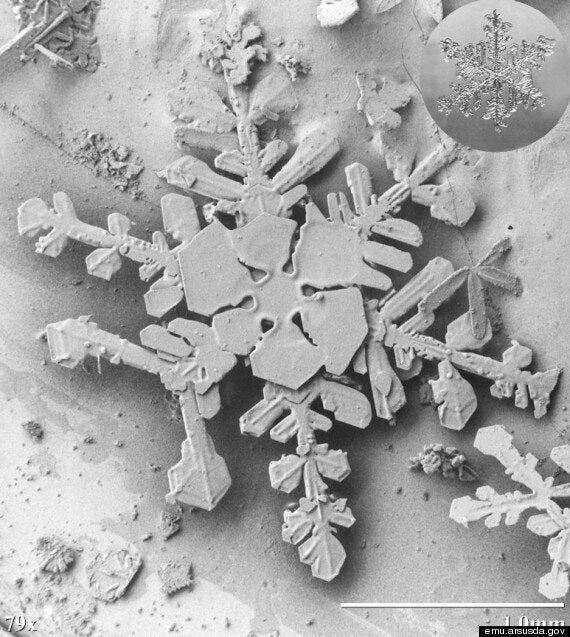They say every snowflake is different from the last, and now we know that to be true, thanks to these astonishingly detailed images.
Taken with a low temperature scanning electron microscope (LT-SEM), the pictures are the work of the Beltsville Agricultural Research Centre in Maryland.
They are undoubtedly beautiful to look at but now for the science bit: Snow and ice crystals are delivered to the facility after being collected on copper sample plates containing pre-cooled methyl cellulose solution.
Scroll down for a gallery of snowflake close-ups

As unique as we are: Up close with a snowflake
The plates are immediately plunged into a reservoir of liquid nitrogen, rapidly cooling them to -196°C, attaching them to the plates.
They are shipped to Maryland where they are held in storage or examined on a pre-cooled (-170°C) stage of a Hitachi S-4100 field emission Scanning Electron Microscope, where they are photographed.
The study of the snowflakes is conducted to determine the water content of the winter snow pack.
A statement linked to the Electron Microscopy Unit Snow Page reads: “This information is critical to the determination of the nation's water supply as well as protection from flooding.
It's all worthy stuff...but also, don't they make you feel all Christmassy?